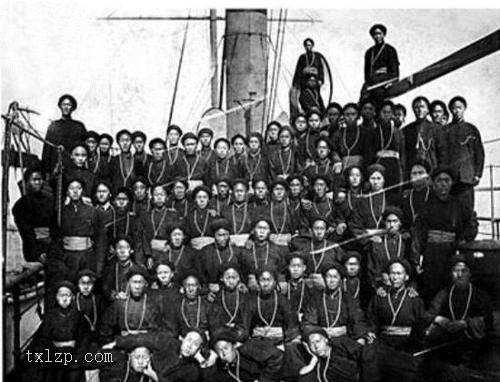Period:Song dynasty Production date:10thC-13thC
Materials:jade
Technique:carved, incised,
Subjects:dog
Dimensions:Length: 5.80 centimetres
Description:
Recumbent dog of white jade with brown markings. The dog is resting with its head turned back towards its hind quarters, its tail curled round its right rear leg.
IMG
![图片[1]-figure BM-2022-3034.258-China Archive](https://chinaarchive.net/Song dynasty/Jades/119_2.jpg)
![图片[2]-figure BM-2022-3034.258-China Archive](https://chinaarchive.net/Song dynasty/Jades/119_3.jpg)
![图片[3]-figure BM-2022-3034.258-China Archive](https://chinaarchive.net/Song dynasty/Jades/119_1.jpg)
Comments:Its knobbed spine and four paws with claws are well delineated with its front paws crossed. Song dynasty. Length 58mm. See Watt 1980 and Ip Yee 1983. An elegant hound lies on the ground its back curved so that its head is turned back towards its hind legs. The knobs of the backbone are neatly raised and rounded and the creature’s ribs are suggested by incised curved lines. A cloudy patch within the otherwise translucent material suggests an area of white fur around the backbone. The hound’s hind legs are drawn up under its body, while its front paws are stretched out in front and crossed over. Fine claws are shown in relief and the undersides of the paws have rounded pads. Indeed, while the underside has little incised detail, the soft curves of the paws and belly beautifully render the creatures body. The hound’s long tail is curved against one of its hind legs. The head, while sunk down towards the front paws, is set attentively with an uplifted snout. Pointed ears are laid back casually and the creature’s eyes appear bright and sparkling. On account of its size, this carving must have been a toggle or ornament, rather than a weight. As with many jade animals, elegant figures of hounds, of which the present example is certainly the best or one of the best known, were probably used over quite a long period, perhaps from the late Tang to the Ming. See James C. Y. Watt, Chinese Jades from Han to Ch’ing, The Asia Society, New York, 1980; and Rawson 1995, p.366, cat.no.26.10.
Materials:jade
Technique:carved, incised,
Subjects:dog
Dimensions:Length: 5.80 centimetres
Description:
Recumbent dog of white jade with brown markings. The dog is resting with its head turned back towards its hind quarters, its tail curled round its right rear leg.
IMG
![图片[1]-figure BM-2022-3034.258-China Archive](https://chinaarchive.net/Song dynasty/Jades/119_2.jpg)
![图片[2]-figure BM-2022-3034.258-China Archive](https://chinaarchive.net/Song dynasty/Jades/119_3.jpg)
![图片[3]-figure BM-2022-3034.258-China Archive](https://chinaarchive.net/Song dynasty/Jades/119_1.jpg)
Comments:Its knobbed spine and four paws with claws are well delineated with its front paws crossed. Song dynasty. Length 58mm. See Watt 1980 and Ip Yee 1983. An elegant hound lies on the ground its back curved so that its head is turned back towards its hind legs. The knobs of the backbone are neatly raised and rounded and the creature’s ribs are suggested by incised curved lines. A cloudy patch within the otherwise translucent material suggests an area of white fur around the backbone. The hound’s hind legs are drawn up under its body, while its front paws are stretched out in front and crossed over. Fine claws are shown in relief and the undersides of the paws have rounded pads. Indeed, while the underside has little incised detail, the soft curves of the paws and belly beautifully render the creatures body. The hound’s long tail is curved against one of its hind legs. The head, while sunk down towards the front paws, is set attentively with an uplifted snout. Pointed ears are laid back casually and the creature’s eyes appear bright and sparkling. On account of its size, this carving must have been a toggle or ornament, rather than a weight. As with many jade animals, elegant figures of hounds, of which the present example is certainly the best or one of the best known, were probably used over quite a long period, perhaps from the late Tang to the Ming. See James C. Y. Watt, Chinese Jades from Han to Ch’ing, The Asia Society, New York, 1980; and Rawson 1995, p.366, cat.no.26.10.
© Copyright
The copyright of the article belongs to the author, please keep the original link for reprinting.
THE END



![[Qing Dynasty] British female painter—Elizabeth Keith, using woodblock prints to record China from the late Qing Dynasty to the early Republic of China—1915-China Archive](https://chinaarchive.net/wp-content/uploads/2022/11/image-191x300.png)

